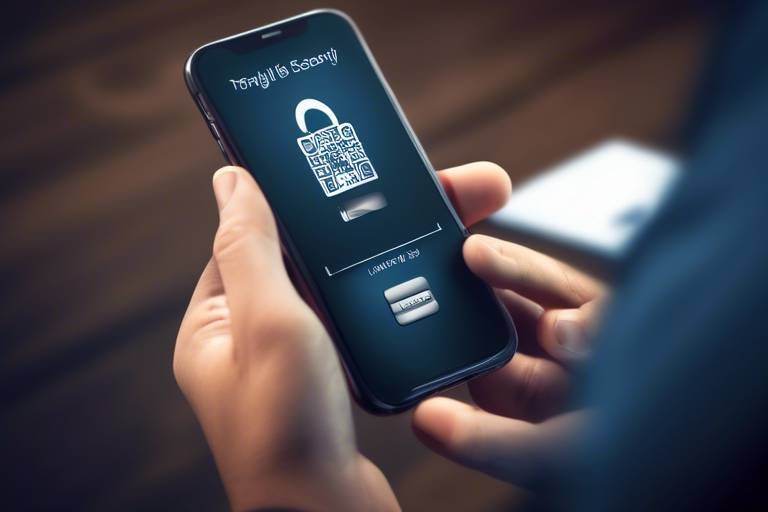How to Protect Your Loved Ones from Cyber Bullying
In today's digital age, the internet can be a double-edged sword. While it offers incredible opportunities for connection and learning, it also exposes individuals, especially young ones, to the dark side of human interaction—cyber bullying. This form of harassment can manifest in various ways, from hurtful messages and social media shaming to exclusion from online groups. It's not just a passing phase; it can have long-lasting effects on the mental health and well-being of those targeted. So, how can we, as families and communities, work together to safeguard our loved ones from this pervasive issue? Let's dive into effective strategies and resources that can help create a safer online environment.
To effectively combat cyber bullying, we first need to understand what it is. Cyber bullying involves the use of digital platforms—like social media, messaging apps, and online forums—to harass, intimidate, or embarrass someone. Unlike traditional bullying, which often occurs in person, cyber bullying can happen 24/7, making it difficult for victims to escape. The anonymity of the internet can embolden bullies, allowing them to say things they might never say face-to-face. This not only amplifies the harm but also complicates the process of identifying and addressing the issue. Recognizing its various forms—such as spreading rumors, impersonation, or sharing private information without consent—is crucial for developing effective prevention and intervention strategies.
Identifying the signs of cyber bullying can be the first step toward intervention. Victims may display noticeable behavioral changes, such as withdrawing from family and friends, declining academic performance, or showing signs of anxiety and depression. If you notice your loved one suddenly becoming secretive about their online activities or developing a fear of going to school, these could be red flags. It's essential to maintain an open line of communication and to approach the topic delicately. Sometimes, just asking if they feel safe online can lead to a deeper conversation about their experiences.
Establishing a secure online space is paramount in protecting against cyber bullying. Start by reviewing privacy settings on social media platforms and encouraging loved ones to do the same. It's crucial to limit who can see their posts and interact with them online. Additionally, consider using monitoring tools that can help keep an eye on their online interactions without invading their privacy. This way, you can be aware of any troubling behavior without being overly intrusive. Most importantly, foster an environment of open communication about internet safety. Discuss the importance of not sharing personal information and the potential risks that come with certain online behaviors.
Creating a culture of open dialogue within your family can empower your loved ones to share their online experiences without fear of judgment. Encourage them to talk about their interactions online and express any concerns they may have. Ask questions like, “How was your day online?” or “Did anything happen that made you uncomfortable?” This shows that you care and are invested in their well-being. It’s important to listen actively and validate their feelings, ensuring they know they can come to you with anything, no matter how small it may seem.
Teaching the principles of digital citizenship is essential for helping individuals navigate online spaces responsibly. This includes understanding the importance of empathy and respect in digital interactions. Remind your loved ones that behind every profile is a real person with feelings. Encourage them to think before they post or share something online. Understanding the consequences of online behavior—both positive and negative—can significantly impact how they interact with others in the digital world. By fostering a sense of responsibility, we can cultivate a generation that promotes kindness and respect online.
If you or someone you know is dealing with cyber bullying, accessing support resources is crucial. Numerous organizations offer hotlines, counseling services, and online communities dedicated to helping victims. Here are some valuable resources:
- National Bullying Prevention Center: Provides resources and support for those affected by bullying.
- StopBullying.gov: Offers information on how to recognize and prevent bullying.
- Crisis Text Line: Text “HOME” to 741741 for free, 24/7 support.
Knowing how to report cyber bullying can be a powerful tool for victims. Each platform has specific guidelines for reporting abusive behavior. Encourage your loved ones to document incidents by taking screenshots and saving messages. When reporting, they should provide as much detail as possible to help authorities take action. Remember, they are not alone in this fight, and taking action can lead to positive change.
Understanding the legal framework surrounding cyber bullying can empower victims to seek justice. Many states have laws in place that specifically address cyber bullying, providing legal recourse for those affected. It's important to research local laws and understand what protections are available. Consulting with legal professionals who specialize in this area can also provide guidance on how to navigate the legal system effectively.
Q: What should I do if I suspect my child is being cyber bullied?
A: Start by having an open conversation with them. Encourage them to share their experiences and feelings. Document any incidents and consider reporting them to the appropriate platforms.
Q: Can cyber bullying happen to adults?
A: Yes, cyber bullying can affect individuals of all ages. It's important for adults to recognize the signs and seek support if they experience harassment online.
Q: What are some preventative measures I can take?
A: Educate your loved ones about online safety, encourage open communication, and regularly review privacy settings on their social media accounts.

Understanding Cyber Bullying
Cyber bullying is a modern-day menace that lurks in the shadows of our digital lives. It involves the use of digital platforms—like social media, messaging apps, and online games—to harass, intimidate, or belittle individuals. Unlike traditional bullying, which often has a clear beginning and end, cyber bullying can happen 24/7, making it feel inescapable for victims. Imagine being haunted by negative comments or threatening messages that follow you everywhere you go, even into the comfort of your own home. This constant exposure can lead to severe emotional and psychological distress.
The forms cyber bullying can take are varied and often insidious. It can manifest as spreading rumors online, sending threatening messages, or even sharing embarrassing photos without permission. The anonymity provided by the internet can embolden bullies, allowing them to act without fear of immediate consequences. This anonymity can make it challenging for victims to identify their tormentors, which adds another layer of complexity to the issue.
Understanding the impact of cyber bullying is crucial for effective prevention. Victims often experience a range of emotional responses, including anxiety, depression, and feelings of isolation. The effects can be long-lasting, affecting self-esteem and overall mental health. In fact, studies have shown that victims of cyber bullying are at a higher risk for substance abuse and suicidal thoughts. Therefore, recognizing the signs early on can make a significant difference in the lives of those affected.
It's important to note that cyber bullying isn't limited to children and teenagers. Adults can also be targets, especially in professional settings where workplace harassment can occur online. This broadens the conversation, emphasizing that cyber bullying is a societal issue that requires collective awareness and action.
In order to combat cyber bullying effectively, we must first educate ourselves and others about what it is and how it manifests. By fostering an environment of understanding and support, we can help create a safer online experience for everyone. Here are some key points to keep in mind:
- Awareness: Recognizing the various forms of cyber bullying is the first step in prevention.
- Impact: Understanding the emotional and psychological effects on victims can help us respond more effectively.
- Support: Encouraging open dialogue about experiences can empower victims to seek help.
In conclusion, understanding cyber bullying is fundamental to developing effective strategies for prevention and intervention. The digital world can be a wonderful place, but it also harbors dangers that we must acknowledge. By educating ourselves and our loved ones, we can take proactive steps to create a more positive online environment.

Signs of Cyber Bullying
Recognizing the is crucial for early intervention and support. Just like a sudden storm can disrupt a sunny day, the effects of cyber bullying can appear out of nowhere, leaving emotional turmoil in their wake. Victims may exhibit a range of behavioral changes that can be subtle or stark, and it's essential for parents, friends, and educators to be vigilant.
One of the primary indicators of cyber bullying is changes in mood. If your loved one, who once radiated joy and enthusiasm, suddenly becomes withdrawn or irritable, it’s a red flag. They might also express feelings of sadness or anxiety more frequently. Sometimes, these emotional shifts can manifest physically; for instance, they may report headaches, stomachaches, or other unexplained ailments. This is their body's way of signaling distress, akin to a warning light flickering on your car dashboard.
Another sign to watch for is a decline in academic performance. If a previously engaged student starts to show disinterest in schoolwork or their grades begin to slip, it could be a sign that something deeper is troubling them. Additionally, you might notice them becoming increasingly secretive about their online activities. If they suddenly guard their phone or computer with a ferocity akin to a dragon protecting its treasure, it’s worth investigating further.
Social withdrawal is also a significant indicator. If your loved one begins to isolate themselves from friends and family, choosing to spend more time alone, this behavior can be alarming. They might stop participating in activities they once loved, much like a flower that wilts without sunlight. Furthermore, if they express fear about going to school or engaging in social situations, it may indicate that they are feeling cornered by their online experiences.
In some cases, victims may also exhibit changes in their online behavior. They might suddenly stop using social media or become overly active in an attempt to combat the bullying. If you notice them receiving an unusual amount of negative messages or comments, or if they seem to be constantly checking their devices, these behaviors can be symptomatic of a larger issue. It’s crucial to approach these situations with empathy and understanding, as victims often feel trapped and alone.
To summarize, here are some key signs of cyber bullying to watch for:
- Sudden changes in mood or behavior
- Decline in academic performance
- Increased secrecy regarding online activities
- Social withdrawal or isolation
- Changes in online behavior
By being aware of these signs, you can take proactive steps to support your loved ones. Just as a lighthouse guides ships safely to shore, your awareness can help steer them away from the rocky shores of cyber bullying.
Q: What should I do if I suspect someone is being cyber bullied?
A: The first step is to approach the individual with care and empathy. Encourage them to talk about their experiences and listen without judgment. Offer your support and help them explore options for reporting the bullying.
Q: How can I encourage my child to talk about their online experiences?
A: Create a safe space for conversation by regularly discussing their online activities. Ask open-ended questions and share your own experiences to foster trust and openness.
Q: Are there legal protections against cyber bullying?
A: Yes, many jurisdictions have laws against cyber bullying. It’s important to familiarize yourself with these laws and seek legal advice if necessary.

Creating a Safe Online Environment
In today's digital age, creating a safe online environment for your loved ones is not just important—it's essential. The internet can be a wonderful place for learning and connecting, but it can also be a breeding ground for negativity and harassment. Imagine the internet as a bustling city; while there are beautiful parks and friendly neighborhoods, there are also dark alleys and untrustworthy characters lurking around. So, how do we ensure our loved ones navigate this digital city safely? Let's dive into some practical strategies.
First and foremost, privacy settings are your best friends. Most social media platforms and online services come equipped with various privacy options that allow users to control who can see their content and interact with them. By customizing these settings, you can significantly reduce the risk of unwanted attention. For instance, consider making profiles private, limiting friend requests to known individuals, and being cautious about sharing personal information like locations or contact details. It's like locking your doors and windows at night—simple, yet incredibly effective!
Next, utilizing monitoring tools can be a game-changer. There are various applications and software available that help parents and guardians keep an eye on their children's online activities without being overly intrusive. These tools can alert you to any suspicious behavior or interactions, allowing you to step in if necessary. However, it's crucial to approach this with a sense of balance; monitoring should not feel like an invasion of privacy. Instead, think of it as a safety net, ensuring your loved ones can explore the digital world while still being protected.
Another vital aspect of creating a safe online environment is fostering open communication about internet safety. Encourage your loved ones to share their online experiences with you. Ask them about their favorite websites, who they chat with, and what they enjoy doing online. This not only helps you stay informed but also builds trust. When children and teens feel comfortable discussing their online lives, they're more likely to come to you if they encounter something troubling. It’s like having a buddy system; when they know you’re there to support them, they’ll feel less isolated.
Moreover, educating loved ones about the importance of digital footprints is crucial. Every post, comment, or image shared online contributes to their digital identity. Help them understand that what they share can have lasting consequences, both positive and negative. Encourage them to think before they post and to consider how their actions might affect others. This awareness can empower them to make responsible choices in their online interactions.
Lastly, don’t forget to lead by example. Model safe online behavior yourself. Show them how to engage respectfully with others and how to handle conflicts or negative interactions gracefully. When they see you practicing what you preach, it reinforces the message that online safety is a shared responsibility. After all, we all play a part in making the internet a safer place.
In conclusion, creating a safe online environment is a multifaceted approach that combines privacy settings, monitoring tools, open communication, education, and leading by example. By taking these steps, you can help your loved ones navigate the digital landscape with confidence and security. Remember, the goal is not to shield them from the internet but to equip them with the tools and knowledge they need to thrive in it.
- What are the best privacy settings to use on social media?
Each platform has different settings, but generally, you should set your profile to private, limit who can send friend requests, and review who can comment on your posts.
- Are monitoring tools intrusive?
Not necessarily. Many tools offer customizable settings that allow you to monitor without being overly invasive. The key is to maintain trust and open communication.
- How can I encourage my child to talk about their online experiences?
Start by showing interest in their online activities. Ask open-ended questions and share your own experiences to create a comfortable dialogue.

Encouraging Open Communication
In today's digital age, where our lives are intertwined with technology, fostering open communication within families is more crucial than ever. Imagine a world where your loved ones feel comfortable sharing their online experiences without the fear of judgment. This is not just a dream; it can be a reality if we actively work towards creating a safe space for dialogue. But how can we achieve this? It starts with understanding the importance of trust and support in conversations about online interactions.
One effective strategy is to initiate regular discussions about online activities. For instance, setting aside a specific time each week to talk about what everyone has been doing online can create a routine that encourages sharing. These discussions should not be limited to negative experiences; celebrate the positive aspects of online interactions too! Ask questions like, “What was the most interesting thing you saw online this week?” or “Did anyone say something that made you laugh?” This not only opens the door for sharing but also reinforces the idea that online experiences can be both good and bad.
Moreover, it’s essential to listen actively. When your loved ones share their experiences, give them your full attention. Show empathy by validating their feelings. For example, if a child shares a story about a mean comment they received, instead of immediately jumping to solutions, say something like, “That sounds really hurtful. I can see why you feel upset.” This type of response fosters a deeper connection and encourages them to come back to you with future concerns.
Another way to encourage open communication is by sharing your own experiences. Be honest about your online encounters, whether they are positive or negative. This approach humanizes the conversation and shows that everyone faces challenges in the digital world. You might say, “I once received a comment that really bothered me, and it made me think about how I interact online.” This not only opens the door for discussion but also models how to handle difficult situations.
Additionally, consider implementing a family agreement regarding online behavior. This can be a simple document that outlines expected behaviors and consequences for negative actions, including cyber bullying. Review this agreement together and allow everyone to contribute. When everyone has a voice in the rules, they are more likely to adhere to them. Here’s a simple outline of what such an agreement could include:
| Rule | Expectation | Consequence |
|---|---|---|
| Respect Others | Always treat others online as you would in person. | Loss of online privileges for one week. |
| Report Negative Behavior | Speak up if you see bullying or harassment. | Discussion with a parent or guardian. |
| Limit Screen Time | Stick to agreed-upon screen time limits. | Reduced screen time for the following week. |
Finally, remember that patience is key. Building a culture of open communication takes time, and there may be moments of resistance. If your loved ones are hesitant to share, don’t push too hard. Instead, reassure them that you are there to listen whenever they are ready. Consider this process like planting a seed; with the right care and attention, it will eventually grow into a strong, healthy plant.
In conclusion, encouraging open communication is not just about talking; it’s about creating an environment where everyone feels safe and valued. By actively engaging in conversations, listening empathetically, sharing experiences, and establishing guidelines, we can help our loved ones navigate the complexities of the online world with confidence. Together, we can combat cyber bullying and promote a culture of respect and understanding.
- How can I start a conversation about online safety with my child? Begin by asking about their favorite online activities and gradually introduce topics about safety and respect.
- What should I do if my child is reluctant to talk about their online experiences? Be patient and reassure them that you are there to listen without judgment. Sometimes, sharing your own experiences can help them open up.
- Are there resources available for families to learn more about online safety? Yes, many organizations offer guides and resources on digital citizenship and online safety for families.

Educating About Digital Citizenship
In today's digital age, understanding the concept of digital citizenship is more important than ever. Digital citizenship refers to the responsible use of technology and the internet. It encompasses a range of skills and behaviors that help individuals navigate the online world safely and respectfully. Just like we teach our kids how to be good citizens in the real world, it’s equally crucial to instill these values in the virtual realm.
Imagine the internet as a bustling city filled with opportunities, but also potential dangers. Just as we wouldn't let our children wander alone in a busy street without guidance, we shouldn't allow them to roam the digital landscape without equipping them with the necessary tools and knowledge. Teaching digital citizenship is akin to giving them a map and a set of rules to follow, ensuring they can explore freely while staying safe.
One of the key components of digital citizenship is empathy. It's essential for individuals to understand that there are real people behind the screens. When we communicate online, our words can have significant impacts—both positive and negative. Encouraging empathy helps individuals consider how their actions affect others. For instance, a seemingly harmless comment can deeply hurt someone, particularly if they are already feeling vulnerable. This is why fostering a culture of respect and kindness is paramount.
Another critical aspect is responsibility. Educating loved ones about the importance of their online footprint can be eye-opening. Every post, tweet, or comment contributes to their digital identity. It’s vital to discuss the long-term consequences of their online behavior, as what they share today could come back to haunt them tomorrow. The idea is to promote a sense of ownership over their digital actions, encouraging them to think before they click.
Moreover, understanding the consequences of online behavior is crucial. Many individuals may not realize that actions like cyberbullying or sharing inappropriate content can lead to serious repercussions. This can include legal consequences, loss of privileges, or damage to their reputation. By discussing these potential outcomes, we can help them make informed decisions about their online interactions.
To effectively educate about digital citizenship, families and educators can employ various strategies:
- Engage in open discussions about online experiences and challenges.
- Utilize resources such as workshops or online courses focused on digital literacy.
- Encourage participation in community programs that promote safe internet use.
By integrating these practices into daily life, we can cultivate a generation of responsible digital citizens who not only understand how to protect themselves but also how to uplift and support their peers in the digital space. Ultimately, the goal is to create a safe and positive online environment where everyone can thrive.
Q: What is digital citizenship?
A: Digital citizenship refers to the responsible and ethical use of technology and the internet, encompassing skills and behaviors that promote safety and respect online.
Q: Why is empathy important in digital citizenship?
A: Empathy helps individuals understand the impact of their online actions on others, fostering a culture of kindness and respect in digital interactions.
Q: How can I teach my child about digital citizenship?
A: Engage in open conversations about their online experiences, encourage responsible behavior, and utilize educational resources that focus on digital literacy.
Q: What are the consequences of irresponsible online behavior?
A: Irresponsible online behavior can lead to legal issues, loss of privileges, and harm to one's reputation, making it crucial to understand the implications of their actions.

Resources for Support
When it comes to tackling the daunting issue of cyber bullying, having access to the right resources can make all the difference. Imagine facing a storm without an umbrella; that’s what it feels like for many victims of cyber bullying. Fortunately, there are numerous avenues for support that can provide shelter and guidance. Whether you're a victim, a parent, or a concerned friend, knowing where to turn can empower you to take action and find solace.
First and foremost, hotlines dedicated to bullying and mental health can offer immediate assistance. These hotlines are staffed by trained professionals who understand the intricacies of cyber bullying and can provide emotional support and practical advice. Here are a few notable resources:
| Resource | Contact Number | Website |
|---|---|---|
| National Bullying Prevention Center | 1-800-273-8255 | Visit |
| Crisis Text Line | Text "HOME" to 741741 | Visit |
| StopBullying.gov | N/A | Visit |
In addition to hotlines, counseling services can provide a safe space for victims to process their experiences. Professional therapists can help individuals navigate the emotional turmoil that often accompanies bullying. Many schools and community centers offer free or low-cost counseling services, making it easier for families to access the help they need. If you’re unsure where to start, consider reaching out to your local school district for recommendations on counselors who specialize in youth and cyber bullying.
Furthermore, online communities and forums can serve as a lifeline for those feeling isolated. Websites like Reddit have dedicated spaces where individuals can share their stories, seek advice, and find comfort in knowing they are not alone. These platforms can foster a sense of community and belonging, which is crucial for healing. However, it’s important to approach these communities with caution and ensure that the interactions remain supportive and constructive.
Lastly, educational workshops and seminars can equip individuals with the tools they need to combat cyber bullying effectively. Many organizations offer programs aimed at raising awareness and providing strategies for prevention and intervention. Attending these workshops can not only provide valuable information but also connect you with others who are passionate about creating a safer online environment.
In summary, the resources available for those affected by cyber bullying are vast and varied. From hotlines and counseling services to online communities and educational workshops, there’s no shortage of support out there. Remember, reaching out for help is a sign of strength, not weakness. By leveraging these resources, you can take proactive steps to protect yourself or your loved ones from the harsh realities of cyber bullying.
Q: What should I do if I suspect someone is being bullied online?
A: Start by having an open conversation with the individual. Encourage them to share their experiences and feelings. If they are comfortable, assist them in seeking help through hotlines or counseling services.
Q: How can I report cyber bullying?
A: Most social media platforms have reporting features. Document the incidents by taking screenshots and report the behavior to the platform and, if necessary, to local authorities.
Q: Are there legal protections against cyber bullying?
A: Yes, many states have laws against cyber bullying. It’s essential to understand your local laws and seek legal advice if you feel threatened or harassed.

Reporting Cyber Bullying
When it comes to cyber bullying, knowing how to report incidents is crucial for victims seeking help. Reporting not only aids in the immediate situation but also contributes to a larger effort in combating this pervasive issue. So, what steps should you take if you or someone you love is facing online harassment? Let's break it down.
First and foremost, it’s essential to document everything. This means taking screenshots of messages, saving emails, and keeping records of any interactions that can serve as evidence. Think of it like building a case; the more information you have, the stronger your position will be. This documentation can be invaluable when you reach out to the platforms or authorities.
Next, each social media platform has its own process for reporting abusive behavior. Here’s a quick overview of what you might expect:
| Platform | Reporting Method | Response Time |
|---|---|---|
| Use the drop-down menu on the post or message to report. | Usually within 24 hours. | |
| Click on the down arrow on the tweet and select 'Report Tweet.' | Varies, but often within a few days. | |
| Tap on the three dots on the post and select 'Report.' | Typically within 24-48 hours. |
After reporting, it’s important to follow up. If you don’t see any action taken, don’t hesitate to reach out again. Persistence can pay off, especially when it comes to ensuring that your concerns are addressed. Additionally, consider reporting the bullying to local authorities or school officials, especially if the behavior escalates or poses a real threat.
Finally, remember that you’re not alone in this fight. There are numerous resources available to help victims of cyber bullying. Organizations like the Cyberbullying Research Center and StopBullying.gov provide valuable information and support. Don’t hesitate to lean on these resources; they exist to help individuals navigate these difficult situations.
In conclusion, reporting cyber bullying is a vital step in reclaiming your safety and well-being. By documenting incidents, understanding the reporting processes, and utilizing available resources, you can take a stand against this harmful behavior. It’s all about empowering yourself and others to create a safer online community.
- What should I do if the bullying continues after reporting? If the situation persists, consider seeking legal advice or contacting law enforcement, especially if there are threats involved.
- Can I report anonymous accounts? Yes, you can report accounts that are harassing you, even if they are anonymous. Provide as much detail as possible.
- What if I am afraid to report? It’s normal to feel scared, but reporting can help stop the behavior. Talk to a trusted friend or family member for support.

Legal Measures and Protections
Understanding the legal landscape surrounding cyber bullying is crucial for victims seeking justice and protection. Laws can vary significantly from one jurisdiction to another, but many regions have begun to implement specific statutes aimed at addressing this modern issue. These laws not only provide a framework for victims to report incidents but also outline the responsibilities of schools, parents, and online platforms in preventing and responding to cyber bullying.
In many cases, victims of cyber bullying can pursue legal action under existing laws related to harassment, defamation, or emotional distress. For instance, if a person is targeted through threatening messages or harmful content shared online, they may have grounds to file a lawsuit against the perpetrator. However, navigating the legal system can be daunting, which is why it's essential for victims to seek legal advice. Having a knowledgeable attorney can help victims understand their options and the potential outcomes of their cases.
Furthermore, many states have enacted specific anti-bullying laws that include provisions for cyber bullying. These laws often require schools to implement policies that address bullying behavior, including those that occur online. Schools are typically mandated to investigate reports of cyber bullying and take appropriate disciplinary actions against the offenders. This legal framework not only protects students but also fosters a safer educational environment.
It's also important to recognize that reporting cyber bullying is not just a personal matter; it often involves notifying the appropriate authorities. Here’s a quick overview of the steps victims can take:
- Document the Evidence: Keep records of all incidents, including screenshots, messages, and URLs.
- Report to the Platform: Most social media sites and online platforms have reporting mechanisms in place for bullying and harassment.
- Contact Authorities: If the situation escalates or involves threats of violence, it’s crucial to involve law enforcement.
- Seek Legal Counsel: Consulting with a lawyer who specializes in cyber bullying can provide clarity on legal options.
In addition to these measures, several organizations and advocacy groups are dedicated to raising awareness about cyber bullying and providing resources for victims. They often offer legal assistance and guidance on how to navigate the complexities of the law. By leveraging these resources, victims can empower themselves and take proactive steps toward securing their rights.
Ultimately, understanding your legal rights and the protections available can make a significant difference in addressing and overcoming the impacts of cyber bullying. It's not just about seeking justice; it's about fostering a culture of respect and safety in our digital interactions. By being informed and proactive, individuals can help create a safer online environment for themselves and others.
Q: What should I do if I am a victim of cyber bullying?
A: Document all incidents, report them to the platform, contact authorities if necessary, and seek legal counsel if needed.
Q: Are there specific laws against cyber bullying?
A: Yes, many states have enacted anti-bullying laws that include provisions for cyber bullying, requiring schools to address such incidents.
Q: Can I sue someone for cyber bullying?
A: Yes, if you have evidence of harassment or defamation, you may have grounds for a lawsuit. Consulting with a lawyer is recommended.
Q: How can I protect my child from cyber bullying?
A: Educate them about internet safety, monitor their online activities, and encourage open communication about their online experiences.
Frequently Asked Questions
- What is cyber bullying?
Cyber bullying refers to the use of digital platforms, such as social media, text messages, and online forums, to harass, intimidate, or harm individuals. It's important to recognize that this form of bullying can have serious emotional and psychological effects on victims.
- What are the signs that someone is being cyber bullied?
Some common signs include sudden changes in behavior, withdrawal from social activities, anxiety, depression, or a drop in academic performance. If you notice these changes, it may be time to have a conversation with your loved one about their online experiences.
- How can I create a safe online environment for my loved ones?
To create a safe online space, consider setting strong privacy settings on social media accounts, using monitoring tools, and fostering open communication about internet safety. Encourage your loved ones to be cautious about what they share online and to think critically about their interactions.
- How can I encourage open communication about online experiences?
Start by establishing a trusting relationship where your loved ones feel comfortable sharing their thoughts. Ask open-ended questions about their online interactions and actively listen to their concerns without judgment. This will help them feel supported and understood.
- What is digital citizenship and why is it important?
Digital citizenship involves understanding how to use technology responsibly and ethically. Teaching principles like empathy, respect, and the consequences of online actions empowers individuals to navigate digital spaces safely and positively.
- What resources are available for victims of cyber bullying?
There are numerous resources available, including hotlines, counseling services, and online support communities. These resources can provide guidance, emotional support, and practical advice for those affected by cyber bullying.
- How do I report cyber bullying?
To report cyber bullying, document the incidents by taking screenshots and saving messages. Then, report the behavior to the platform where it occurred and, if necessary, to local authorities. Many platforms have specific procedures for reporting abuse.
- What legal protections exist against cyber bullying?
Legal protections vary by location, but many jurisdictions have laws that address cyber bullying. Understanding these laws can help victims seek justice and protection. It's advisable to consult with legal professionals if you're considering legal action.



















